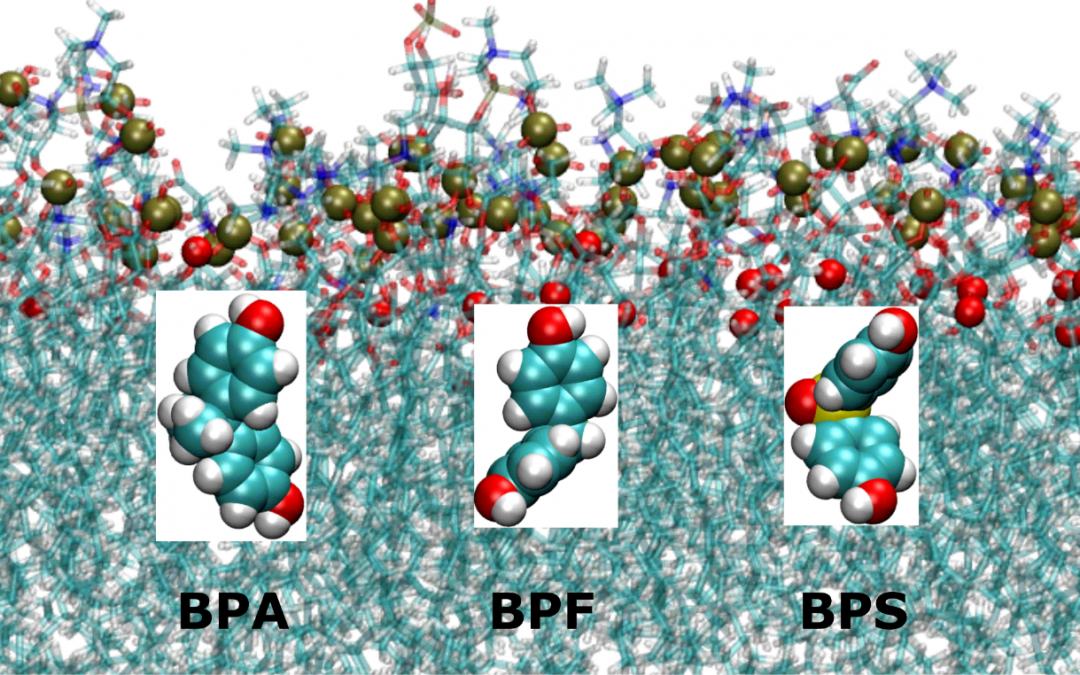Bisphenols are a group of endocrine-disrupting chemicals used worldwide for the production of plastics and resins. Bisphenol A (BPA), the main bisphenol, exhibits many unwanted effects. BPA has, currently, been replaced with bisphenol F (BPF) and bisphenol S (BPS) in many applications in the hope that these molecules have a lesser effect on metabolism than BPA. Since bisphenols tend to partition into the lipid phase, their place of choice would be the cellular membrane. In this paper, Prof. Villalaín carried out molecular dynamics simulations to compare the localization and interactions of BPA, BPF, and BPS in a complex membrane.
This study suggests that bisphenols tend to be placed at the membrane interface, they have no preferred orientation inside the membrane, they can be in the monomer or aggregated state, and they affect the biophysical properties of the membrane lipids. The properties of bisphenols can be attributed, at least in part, to their membranotropic effects and to the modulation of the biophysical membrane properties. The data support that both BPF and BPS, behaving in the same way in the membrane as BPA and with the same capacity to accumulate in the biological membrane, are not safe alternatives to BPA.
More information in this link.

